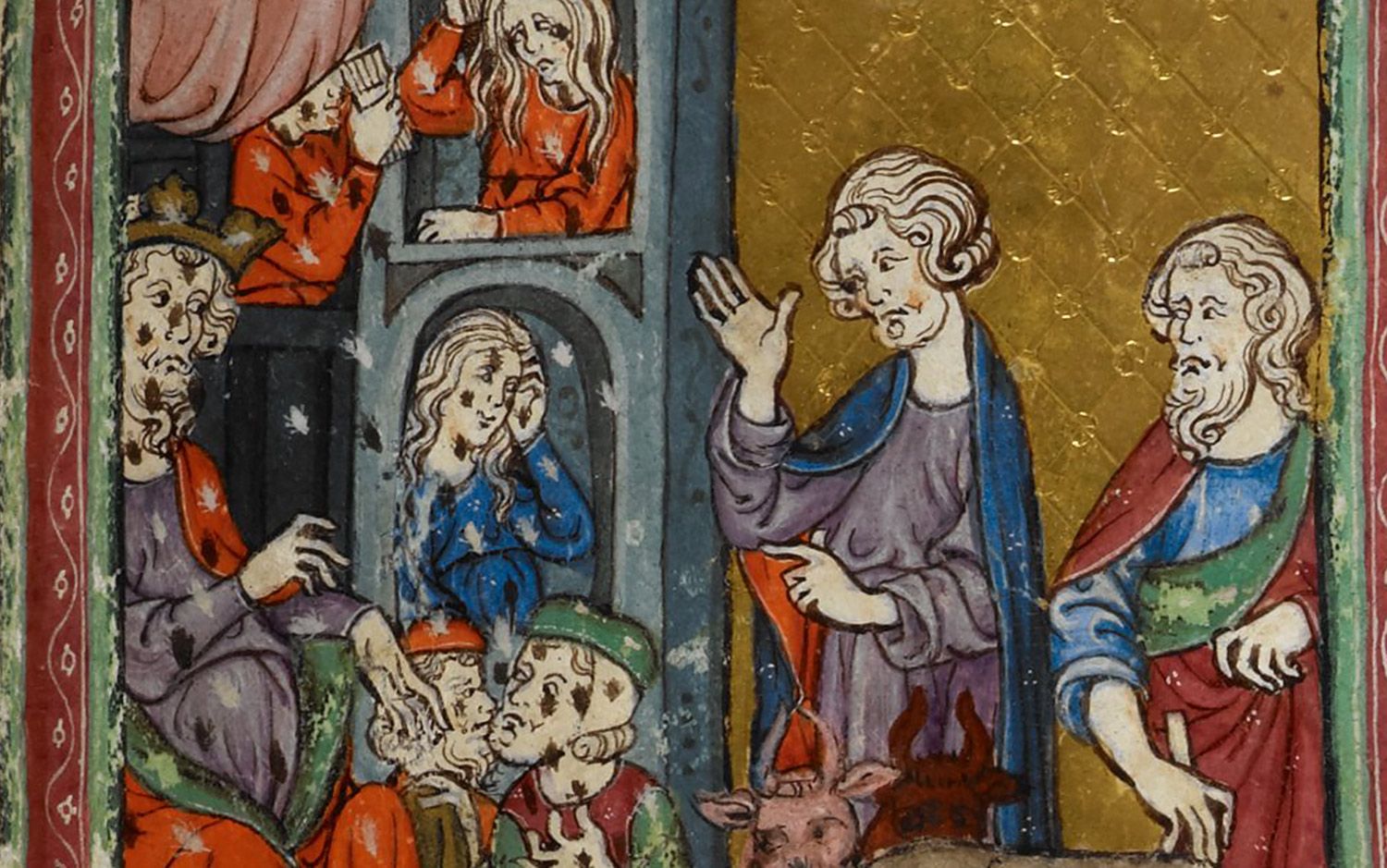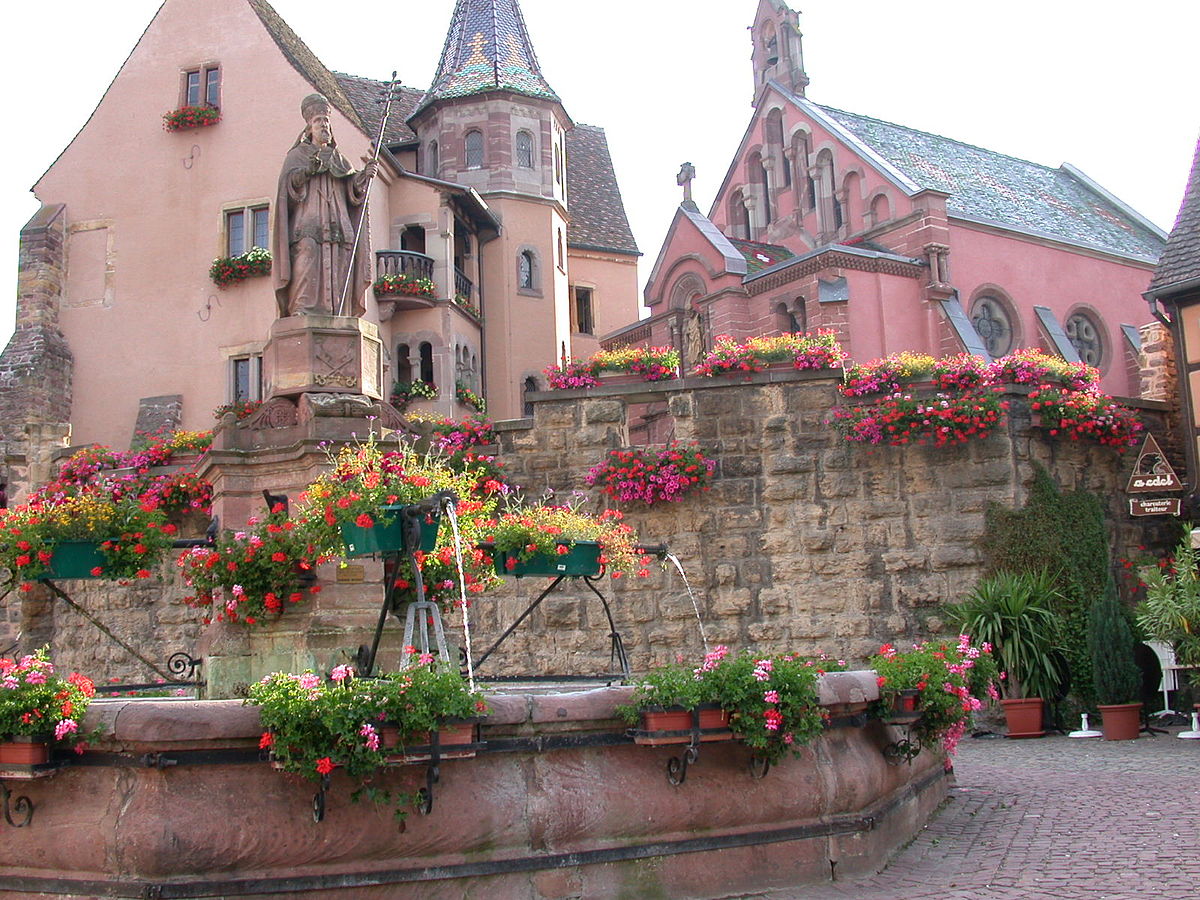Monasteries tried to be self-sufficient, baking their own bread, brewing their own ale, growing crops, vegetables, herbs, keeping bees for honey and breeding fish in complex fisheries. Monks in medieval Europe belonged to orders of the Catholic Church, often living a life of poverty and spiritual study. Many orders still survive to this day, and their mission is still commitment. What did kings eat for breakfast? In medieval times kings ate bread, fruits and oats. For a drink the kings had wine or ale. 3 fish or meat dishes. What did lords/ nobles eat for breakfast? For a drink they had wine or ale. White bread, 3 fish dishes and 3 meat dishes. What did knights eat.
A refectory (also frater, frater house, fratery) is a dining room, especially in monasteries, boarding schools and academic institutions. One of the places the term is most often used today is in graduate seminaries. The name derives from the Latin reficere 'to remake or restore,' via Late Latinrefectorium, which means 'a place one goes to be restored' (cf. 'restaurant').
Refectories and monastic culture[edit]

Communal meals are the times when all monks of an institution are together. Diet and eating habits differ somewhat by monastic order, and more widely by schedule. The Benedictine rule is illustrative.

The Rule of St Benedict orders two meals. Dinner is provided year-round; supper is also served from late spring to early fall, except for Wednesdays and Fridays. The diet originally consisted of simple fare: two dishes, with fruit as a third course if available. The food was simple, with the meat of mammals forbidden to all but the sick. Moderation in all aspects of diet is the spirit of Benedict's law. Meals are eaten in silence, facilitated sometimes by hand signals. A single monk might read aloud from the Scriptures or writings of the saints during the meals.
Size, structure, and placement[edit]
Refectories vary in size and dimension, based primarily on wealth and size of the monastery, as well as when the room was built. They share certain design features. Monks eat at long benches; important officials sit at raised benches at one end of the hall. A lavabo, or large basin for hand-washing, usually stands outside the refectory.
Tradition also fixes other factors. In England, the refectory is generally built on an undercroft (perhaps in an allusion to the upper room where the Last Supper reportedly took place) on the side of the cloister opposite the church. Benedictine models are traditionally generally laid out on an east–west axis, while Cistercian models lie north–south.
Norman refectories could be as large as 160 feet (49 m) long by 35 feet (11 m) wide (such as the abbey at Norwich). Even relatively early refectories might have windows, but these became larger and more elaborate in the high medieval period. The refectory at Cluny Abbey was lit through thirty-six large glazed windows. The twelfth-century abbey at Mont Saint-Michel had six windows, five feet wide by twenty feet high.
Eastern Orthodox[edit]
In Eastern Orthodox monasteries, the trapezna (Greek: τράπεζα, refectory) is considered a sacred place, and even in some cases is constructed as a full church with an altar and iconostasis. Some services are intended to be performed specifically in the trapezna. There is always at least one icon with a lampada (oil lamp) kept burning in front of it. The service of the Lifting of the Panagia is performed at the end of meals. During Bright Week, this service is replaced with the Lifting of the Artos. In some monasteries, the Ceremony of Forgiveness at the beginning of Great Lent is performed in the trapeza. All food served in the trapeza should be blessed, and for that purpose, holy water is often kept in the kitchen.
Modern usage[edit]
As well as continued use of the historic monastic meaning, the word refectory is often used in a modern context to refer to a café or cafeteria that is open to the public—including non-worshipers such as tourists—attached to a cathedral or abbey. This usage is particularly prevalent in Church of England buildings, which use the takings to supplement their income.[1]
Many universities in the UK also call their student cafeteria or dining facilities the refectory. The term is rare at American colleges, although Brown University calls its main dining hall the Sharpe Refectory (nicknamed the 'Ratty' or the 'rodent')[2] and the main dining hall at Rhodes College is known as the Catherine Burrow Refectory (nicknamed 'the Rat').[3]
See also[edit]
References[edit]

- ^'The Refectory Restaurant and Coffee Shop'. Archived from the original on February 4, 2009. Retrieved February 16, 2009.
- ^'Putting a face to 'the rodent' movement'. Brown Daily Herald. Retrieved 18 November 2018.
- ^'Catherine Burrow Refectory'. Dining at Rhodes. Retrieved 26 April 2017.

Sources[edit]
- Adams, Henry, Mont Saint-Michel and Chartres. New York: Penguin, 1986.
- Fernie, E. C. The Architecture of Norman England. Oxford: Oxford University Press, 2000.
- Harvey, Barbara. Living and Dying in England, 1100-1450. Oxford: Clarendon Press, 1995.
- Singman, Jeffrey. Daily Life in Medieval Europe. Westport, CT: Greenwood Press, 1999.
- Webb, Geoffrey. Architecture in Britain: the Middle Ages. Baltimore: Penguin, 1956.
External links[edit]
| Wikisource has the text of the 1911 Encyclopædia Britannica article Refectory. |
| Look up Refectory in Wiktionary, the free dictionary. |
Modern times see us finding more environmentally friendly and sustainable ways to eat. But are we just following in the footsteps of the monks who lived in Scotland almost a thousand years ago?
In National Vegetarian Week, HES Sustainability Officer Louise Kelly takes us on a monastic journey through medieval Scotland, exploring the role of food in a monk’s life and discovering how abstaining from eating meat is far from a modern idea.
The Rule of St Benedict
A priory at Dunfermline Abbey was founded by St Margaret in 1070
Monks at Benedictine abbeys like Dunfermline and Iona followed the Rule of Saint Benedict. This book of commandments written in 516 by Benedict of Nursia contains numerous food-related rules, including limiting meat consumption.
Chapters 39 and 40 of the book dictate that monks may enjoy two meals a day, with two cooked dishes at each. Each monk is allowed a pound of bread, along with a quarter litre of wine.
Benedictine monks were not quite vegetarian by modern standards, though. Eating meat from four-legged animals was prohibited, but they could eat meat from birds and fish.
An artist’s impression of how the kitchens and dining areas might have looked at Dunfermline Abbey around 1400
Artisan bread for the Abbot
Cheap, easy to produce and filling, bread was key part of most people during medieval times, monks included.
But not all bread was created equal. The grains used to make bread would vary depending upon the status of the individual it was produced for. It was not uncommon for senior members of the religious community such as the Abbot to eat higher quality, more expensive bread.
Eat Like A Monk
This bread was usually made from finer, more processed flour. It was shaped into smaller loaves, usually for consumption by just one person. As far as we can tell these would be somewhat similar to a modern white dinner roll.
Senior members of the religious community and their guests would often eat higher quality food
Cultivating Cistercians
The Cistercian Order established their first Scottish monastery at Melrose Abbey in 1136. The Cistercians also followed the Rule of St Benedict – but used a stricter version than the Benedictines.
They were largely vegetarian and ate mostly plant-based foods. Exceptions were only made for the sick, who were given meat, or on feast days, when fish and eggs might be eaten.
Working was key to the Cistercian way of life. Monks and lay brothers at Scottish Cistercian abbeys such as Glenluce, Dundrennan, Deer and Sweetheart would have grown food at or near their abbey. Typical foods grown in Scotland in the medieval period would have included cabbage, turnips, carrots, peas, onions and beans.
What Do Monk Eat
Herbs were also important both for culinary as well as medicinal uses. In contrast, many spices, including pepper, were not permitted as they were expensive and considered a luxury due to being transported long distances.
Sweetheart Abbey was the last Cistercian abbey to be established in Scotland
Standing at the heart of a fertile valley, Melrose Abbey quickly became one of the wealthiest foundations in the country.
Walter Bower’s great chronicle of Scottish history, the Scotichronicon, recounts how the local community relied on the Abbey for food during times of hardship:
‘When the calamity of a deadly famine threatened, a vast crowd of destitute people reckoned to number four thousand gathered at Melrose, and erected huts and tents for themselves in the fields and woods around the monastery for a distance of two miles.’
Accidental Vegetarians?
Common thinking in medieval times was that humans were entitled to make use of all resources available to them so voluntarily abstaining from meat was not common.
But even outside of monasteries, the church limited the eating of meat. Many days of the year were fast days, where meat was not permitted. The exact rules varied, often permitting the eating of fish and birds.
Common dishes were variable and would have been made from what was available in the area at the time of year.
Pottage, for example, was eaten by almost everyone in the medieval period. Similar to a soup or stew, it usually contained vegetables and grains. There was sometimes meat, but only if it was available.
The result was that many medieval people, both in and out of religious orders, didn’t eat meat every day.
A return to the monks’ diet?
Benedictine monks working in the cellar, Dunfermline Abbey
While today’s vegetarian communities are often motivated by concerns about climate change with animal agriculture responsible for approximately 14.5% of global emissions, the Rule of St Benedict set a trend by abstaining from meat.
Scottish monks and the communities they supported weren’t vegetarian for the same reasons, but perhaps modern day veggies are inadvertently following in their medieval footsteps.
If you’ve been inspired to make some changes since the recent declaration of a Climate Emergency eating less meat is a great place to start. Could you be inspired by medieval monks to try going vegetarian in vegetarian week?
What Do Medieval Monks Wear
Head to our Climate Change webpages to find out how climate change affects the historic environment and what HES are doing to help limit the impact.
Share
What Would Medieval Monks Eat
- « Help conserve Scotland’s historic sites – with your phone!
- The Goths of Fife and the Lothians »
